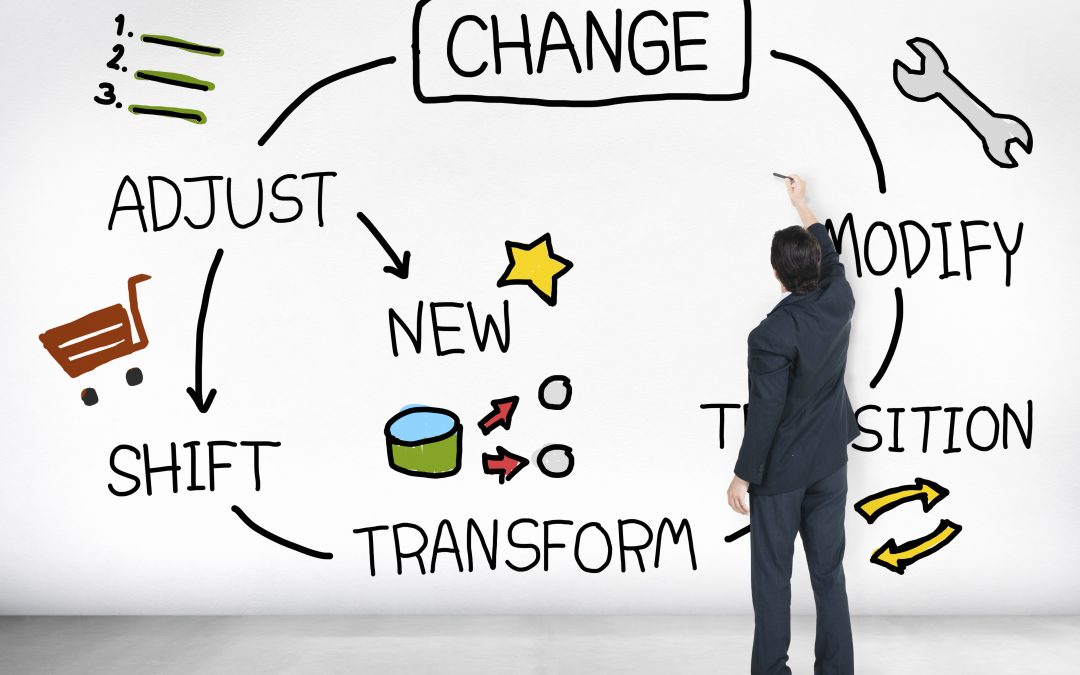
by PT-clc | Jun 7, 2018 | Change, Conscious Living, Letting Go, Life Transitions
I’m culling yet again! Less than two years ago my husband and I did a big downsize and moved from our dream home in the Okanagan Valley to a 2-bedroom rental apartment in Victoria. At that time I sold and gave away a lot of furniture, books, clothes …. When we moved from the rental apartment to our new townhome in late November, I culled yet again. Several months ago I committed to clearing out our Seacan (Big Steel Box) of remaining “bits and pieces” by the end of June this year. Now the pressure is on!
When I go through my boxes it feels like a life review. Recently I found a number of photos of my kids, friends, other members of my family and myself and had to make the tough decision about which ones to keep and which ones to throw away. I know that I could scan them all, but at this point in my life I don’t have the patience for that! Do your relate?
I’ve done a number of things throughout my life and have been going through courses I designed and taught; articles and documents I’ve written. On the one hand it’s felt good to realize what I’ve done, on the other I wonder how I used to accomplish what I did in a day. It’s a far cry from my current level of productivity!
I love books and have again gone through them and made decisions about which ones to give away. Some of them are in a “holding pattern” as I feel like I “should” read them again, but I question Is this a good reason to reread a book? Am I just afraid of letting go of more of my stuff?
So what am I learning from this experience? It’s teaching me to let go of things that no longer are of interest or bring me joy. It’s made me realize things that used to stir my passion, no longer do. My life has gradually switched from an almost total focus on activities involving my logical left-brain to a focus on my creative right brain and listening to my body; from a focus on achievement, to connection and creativity. It’s an interesting and yet at the same time, strange place to be. In the past I’ve always pretty well known the next step to take. Now I’m being asked to be patient, to create space and to notice what comes up. Have you ever been here? I also realize that when I let go, it opens the door for new people and possibilities to show up in my life. So I need to trust that I will be “shown the way”; all in good time.
Have you ever been in a “holding pattern” and wondered what your next step should be? What was that experience like for you? Have you culled your possessions recently or in the past? If so, what was that like for you?
I invite you to share your thoughts and experiences below, as that’s how we learn from each other. Until next time!

by PT-clc | Apr 10, 2018 | Change, Conscious Living, Dealing with Stress, Managing Change, Women in Business
Our world is characterized by rapid change and uncertainty. With new technologies, scientific advances, and rapid access to information, increasing expectations are being placed on us to do more things, faster and better. At times we feel stressed, overwhelmed and struggle with the inevitable fear, anxiety and doubt change brings up. I believe that we all have a choice to consciously embrace change rather than to unconsciously react to it.
Why do we fear change?
We are hard-wired to react to change; to protect ourselves and stay safe. Our primitive brains unconsciously “turn on” when we are in a situation that is different; we prefer sameness. Our amygdala (part of the brain) is constantly scanning our environment and when it senses a threat, it sends messages to our bodies to go into fight, flight or freeze. We all have seen friends or colleagues become angry or “edgy” when a change is imposed on them (e.g. new management, downsize, separation or divorce). We’ve also observed others or ourselves going into paralysis, and unable to make a decision. You may find when you are forced into changing something in your life, you typically want to run away from it or “hide your head in the sand”. We all have different ways we react to change.
There is strong evidence to show that we can choose how we respond to change. By consciously changing our beliefs and perceptions we have about change, we can physiologically change the structure of our brain (e.g. create new neural pathways). Dr. Norman Doidge’s amazing work on neuroplasticity described in The Brain that Changes Itself provides strong supportive evidence. Dr. Bruce Lipton in The Biology of Belief, shares powerful scientific evidence to show that all the cells in our body are affected by our thoughts.
How can we reduce our fear of change?
We can:
- Understand how and why we respond to change
- Become aware of our beliefs about change
- Try on some new beliefs around change
- Learn a proven model and tools to help us reduce resistance, and embrace and successfully navigate any change
- Commit to integrating new change strategies into our lives.
The more you understand change and the more self aware you are about how and why you respond to it, the more easily you can embrace and move through it.
So where can you start?
The 5-step Art of Change Framework I’ve developed based on more than 25 years of living, consulting and coaching on 5 continents, is a practical and accessible process. This framework is a proven model for embracing change whether it involves getting unstuck and moving forward when change is imposed on you, or whether you choose to initiate a change in your beliefs, attitudes and/or behaviors.
The Art of Change Framework is based on the belief that embracing change is a creative process that opens us up to new possibilities. Think of the times in your life when change was thrust upon you; e.g. you were laid off; or when a boyfriend/girlfriend broke up with you. At that time, you may have felt caught off guard, angry, fearful and uncertain about the future. On reflection, these changes opened you up to a new and better relationship or a position more aligned with your values and passions.
Embracing change enables you to let go of patterns that are no longer serving you and to move forward with confidence, clarity, improved health, happiness, fulfillment, and inner peace. For examples of this see: https://pamela-thompson.com/let-go-fly-free/.
The Art of Change Framework is a 5-step process for embracing change that uses the metaphor of life as a dance. The steps are:
- Shine the Light – Explore how you respond to change and why
- Choose Your Dance – Identify the transition you want to work on and where you are on your transition journey
- Feel the Rhythm and Learn the Steps – Commit to embracing change in your body rather than resisting it, and begin doing the work associated with the phase of the transition journey you are in
- Practice, Practice, Practice! – Do the work that includes letting go, identifying lessons learned, envisioning the work, relationship or life of your dreams, taking action, and viewing change as a creative process that opens you up to new possibilities
- Consciously Share Your Dance with the World – Observe the positive changes in yourself, how others respond to you, and the positive impact you have on your family, friends, communities and workplaces.
If you’re interested in “diving deeper” into the Art of Change Framework, I encourage you to join me and a group of like-minded women for a fun and interactive one-day workshop “Embrace the Art of Change: From Fear to Freedom” on April 27th in beautiful Victoria, BC. To learn more and to register:
https://www.eventbrite.com/e/embrace-the-art-of-change-from-fear-to-freedom-tickets-44230204733

by PT-clc | Mar 28, 2018 | Change, Coping with Change, Creative Living, Letting Go, Stress Management
“Freedom is a gift you give yourself when you release fear and spread your wings” – https://www.suziecheel.com/
I love this quote by Suzie Cheel!
What do you need to do to move toward freedom or in other words what do you need to let go of, in order to fly free? …
It could be letting go of deep-seated beliefs such as:
- In order to be loved and valued I need to perform and achieve
- If I give to myself, I am selfish.
- If I go really big with my business and am successful, I won’t have time for myself or to spend with people I care about.
It could be behaviors that are no longer serving you such as:
- At networking events or in social situations when meeting someone new, leading with what you know and what you’ve done so that people know you’re smart and accomplished, instead of leading with genuine interest in and questions about the person you’re interacting with.
- When speaking with someone at home or work, instead of focusing on them and being present, rather thinking of the next thing on your “to-do” list.
- Reacting negatively when changes happen or are imposed on you instead of thinking “what am I meant to learn from this experience”?
I recently completed a six-week “Soul Painting” course with Kimberly Leslie – https://www.kimberlyleslie.com/– an artist, healer and intuitive. I was interested in learning how to paint with acrylics, plus I was intrigued by the opportunity to be guided and supported in a small group to “create a painting in a sacred space that invite(d) my soul to share itself with me.”
The process was fun; I got to connect with my inner child and to finger paint. I was amazed at the energy in everyone’s painting, and was intrigued by the process and what I learned about myself through it. At the final class, the completion class, Kimberly guided us to ask our paintings what else they needed. At one point I put mine up against the wall, sat in front of it and asked what more was I meant to learn from it. Tears began to stream down my face and I asked what the emotion was about. I got the strong message that I didn’t need to perform and achieve in order to be loved and valued, instead by being myself I am valued and loved. It was a powerful moment.
There are a number of transformational techniques I’ve found useful for myself and my clients, that enable us to let go of beliefs and behaviors that are no longer serving us and move closer to flying free. In addition to the course I mentioned, they include:
- Spending regular time in nature
- Doing mindfulness walking meditations
- Journalling in the morning first thing or just before going to bed
- When faced with a challenging experience or change that is imposed on you, spending time “going inside” and asking “what am I meant to learn from this experience?”
- Participating in a group program or workshop where you are supported by an experienced facilitator and coach/mentor and learn how to turn your fears and doubts around change into living with more aliveness, creativity and joy such as:
https://www.eventbrite.com/e/embrace-the-art-of-change-from-fear-to-freedom-tickets-44230204733
If you’d like to learn more about how to “Let Go and Fly Free”, I’d love to have you join me and a small group of like-minded women in a beautiful natural environment for a one-day workshop Embrace the Art of Change: From Fear to Freedom on April 27th in Victoria. If you live up Island, or in such places as the Lower Mainland, the Okanagan or Washington state, if this speaks to you, I encourage you to join us and and spend several days in beautiful Victoria!

by PT-clc | Feb 6, 2018 | Change, Coping with Change, Creative Living, Entrepreneurship, Life Transitions, Women in Business
What does change have to do with being an entrepreneur?
- Entrepreneurship is all about change. When you start your own business it’s often scary as you’re leaving a “secure” position to go out on your own to new and uncharted territory. Having a business is all about experimenting. You try one niche and if you don’t get a great response you switch to another. You write copy for a program, product or service, test it, see who it attracts and then write some more and test that. In business we learn from our successes as well as our failures (usually more from our failures). Being successful in business requires being open to learning and growing.
- As we move through the various phases of growing our business, limiting beliefs and unresolved issues typically come up for us. Our inner critic sends us messages such as: Who do you think you are to want a 6-figure income? (related to self-worth); How can you choose such a narrow niche, you’ll have no clients? (related to fear of not making enough money). In order to grow your business you need to address those limiting beliefs and unresolved issues which involves change and transformation.
- Life Transitions and Changes in Business are intertwined. If we are stressed by changes in our business (e.g. breakdown of a business partnership), we often bring them into our personal lives and take our anger and frustration home with us. Similarly, if we are going through relationship transitions (e.g. separation or divorce), we often bring the emotions associated with those into our work. They may cause us to lose our focus, our patience and result in less engagement, lower productivity and more conflict at work.
- Our beliefs about change influence our behaviors related to it. For example, if you perceive change as scary and to be feared, then you will resist it and experience a lot of stress related to it. Whereas, if you view change as a creative process that opens you up to new possibilities, the change experience becomes exciting, easier and faster.
- There is some solace in knowing that we are all hard-wired to fear change. Our amygdala (part of the brain) is constantly scanning the environment to protect us and keep us safe. When it perceives a threat or something out of the ordinary, it sends messages to our bodies to go into fight, flight or freeze.
What happens when we don’t embrace change?
Research and life experiences show that if we don’t learn to embrace change we:
- keep repeating the same patterns in our lives and remaining unhappy and unfulfilled
- expend a lot of energy resisting change
- feel constantly under stress leading to chronic health issues and negative impacts on our relationships and our businesses.
The bottom line is if we don’t learn to embrace change, over time it negatively impacts both our personal and our professional lives.
So how can we reduce our fear of change?
We can reduce our fear of change when we:
- better understand how and why we respond to change
- learn a proven model and tools to help us reduce resistance and embrace and successfully navigate any change.
The more you understand change and the more self-aware you are about how and why you respond to it, the more easily you can embrace and move through it.
Why I’m so passionate about sharing this message
Having been an entrepreneur since the early 1990s, and running three successful businesses, I’ve experienced many changes in my business and personal life and learned some of my lessons the hard way, I know that having tools and processes to understand and embrace change is critical to creating the business and life of your dreams. I’m now called to support leaders and entrepreneurs to better understand and to embrace change. Based on more than 25 years of leading, consulting and coaching with individuals and organizations from diverse cultures on 5 continents, I’ve created the Art of Change Framework. It’s a proven 5-step process that guides and supports individuals and teams to move from fear and uncertainty to clarity and confidence. It makes the change experience fun as it likens the process to learning a dance.
We all need to process change and we do it in different ways and at different rates. When you have an increased understanding of change and how you respond to it, and proven processes and tools to help you to successfully navigate the change experience, it positively impacts your business and your bottom line.
If you’d like to learn more about the Art of Change Framework, here are some relevant articles: https://pamela-thompson.com/strengthen-impact-world-dance-change/ ; https://pamela-thompson.com/important-embrace-change-begin/
If you’re going through a life transition and would like to learn more about it and how to more easily navigate it, I encourage you to sign up for my complimentary Transition Journey Quiz and Tips – https://pamela-thompson.com/about/
I always like to hear from you and how the articles “land” and welcome your comments below. How has change affected you and your business? What tools and strategies have you found helpful to navigate change? Please share the post with others who you think might benefit.

by PT-clc | Jan 9, 2018 | Change, Coping with Change, Creative Living, Leadership
The Art of Change Framework is a proven 5-step model for embracing change be it in yourself, your relationships, your workplace/organization. In a previous post I outlined the 5 steps in this model – https://pamela-thompson.com/strengthen-impact-world-dance-change/. In subsequent posts I identified the powerful practices associated with each step in the process. This article will focus on step 5 in the Art of Change Framework entitled Consciously Share Your Dance with the World.
We know that when we change, others around us notice these changes and either choose to follow us or resist the changes we are modelling. An example is personal growth work. If one partner in a relationship wants to learn and grow and begins reading about personal growth and attending workshops or receiving coaching to learn and grow, and their partner is not on the same wavelength, the partner who wants to maintain the status quo may feel threatened by the changes in the other’s behaviour. For example, having a spiritual connection when your partner is an atheist or becoming more assertive in conversations instead of not saying much or always acquiescing to the other partner’s wishes. Does this sound familiar? When we change, we influence those around us.
During step 5 in the Art of Change Framework, it is important to observe the positive changes in yourself, how others respond to you, and the positive impact you are having on your family, friends, communities and workplaces.
As a leader in an organization, you will notice the difference among people who either resist or embrace changes that you initiate. The tables below identify the typical differences between those who resist and those who embrace change.
What happens in Ourselves, Our Relationships and Our Workplaces when We Resist Change versus Embrace it?
OURSELVES
|
Resist
|
Embrace
|
| We view change as a threat |
We view change as an opportunity to learn and grow and as a creative process that opens us up to new opportunities
|
| We feel:
o Angry
o Depleted
o Low in energy
o Victimized
· The increased stress over time negatively impacts our health; can lead to chronic illness and negatively affect our career paths
|
We feel:
o Open
o Excited
o Energized
o Nonjudgmental
· Over time we are more relaxed, more flexible and open to creative ideas
· Our health may be positively impacted as we feel supported by those around us and that we are contributing to something greater than ourselves; may positively impact our career paths |
| In our interactions with others we:
o Are not totally present
o Are judgmental
o May be argumentative |
In our interactions with others we:
o Are present
o Are mindful
o Seek to understand and support others |
OUR RELATIONSHIPS
|
Resist
|
Embrace
|
| o Strained
o Reactive
o Judgmental
o Characterized by increased conflict
o We feel alone, victimized and that others don’t understand us |
o Open
o Responsive
o Curious
o Characterized by increased understanding, creativity and compassion
o We feel part of something and supported |
OUR WORKPLACES
|
RESIST
o Increased conflict – “us” versus “them” mentality
o Reduced morale
o Reduced engagement
o Little innovation
o Increased illness and absenteeism
o Negative impact on the bottom line |
EMBRACE
o Increased cooperation, collaboration and synergy
o Increased morale
o Increased engagement
o Creativity and Innovation
o Reduced absenteeism
o Positive impact on the bottom line |
Learning how to embrace change and understanding how we respond to it, is critical to positively influencing our families, friends, communities and workplaces. Learning and implementing the 5-step Art of Change Framework helps you understand how you respond to change and is a tool to support you and your team(s) to embrace it. In these challenging and uncertain times, now more than ever, we need proven processes to support individuals and leaders in communities and organizations to make a positive difference in the world.
What have you noticed in yourself, your relationships and/or your work environments when they are characterized by embracing versus resisting change? What aspects of the Art of Change Framework have you found most useful? Any new insights? I invite and welcome your comments below.




